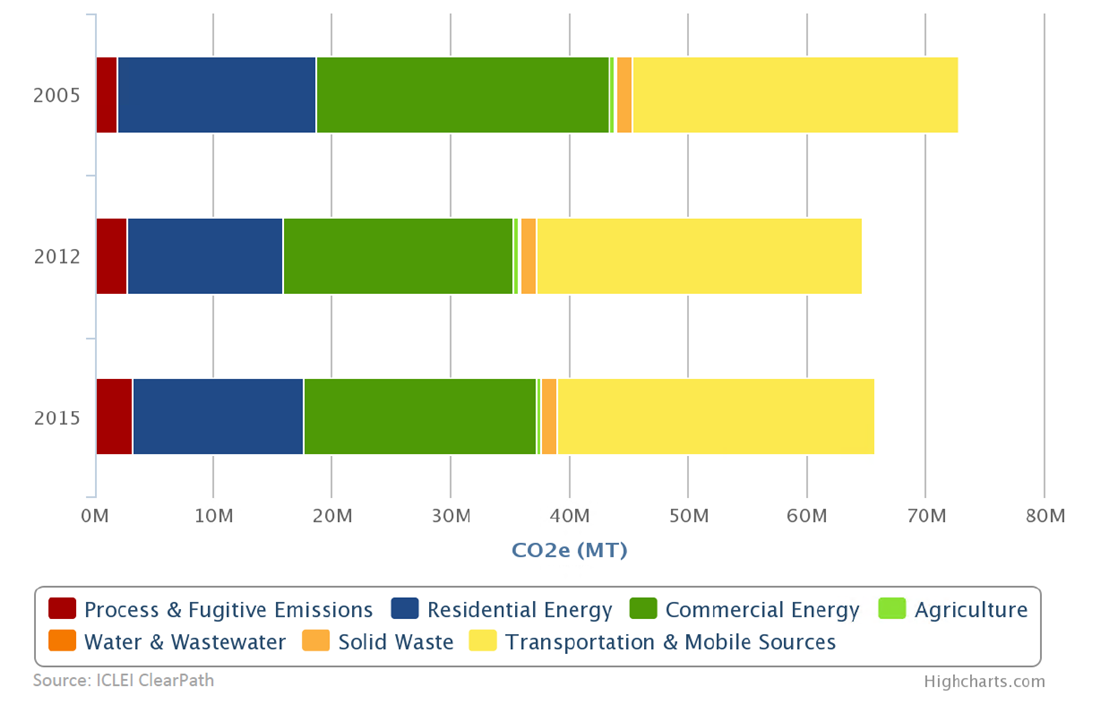New greenhouse gas (GHG) inventory results for metropolitan Washington show emissions decreased by 10 percent between 2005 and 2015, despite continued population and economic growth during that period. This puts the region just halfway to its goal of reducing GHG emissions by 20 percent below 2005 levels by 2020. The region’s long-term goal is to reduce emissions by 80 percent by 2050.
The inventory was released at a July Metropolitan Washington Council of Governments (COG) Climate, Energy, and Environment Policy Committee (CEEPC) work session. It documents the GHG-emitting activities of residents, businesses, industry, government, and visitors—including electricity consumption, the use of natural gas and other fuels, transportation activities, and more. In 2015, energy consumption (residential and commercial) and transportation/mobile sources accounted for greatest portion of emissions (52 percent and 41 percent respectively).
Metropolitan Washington Emissions Inventory, 2005-2015

The CEEPC work session analyzed why emissions are changing in metropolitan Washington communities using a new GHG Contribution Analysis Tool. Results for metropolitan Washington show emissions are reducing due to a cleaner electric grid, cleaner cars on our roads, and less driving per person.
COG is part of a national team of cities and regions that developed the tool, in partnership with Local Governments for Sustainability (ICLEI) with support from the U.S. Department of Energy. The tool is helping communities assess and communicate the impact of local actions—including government policies and programs—on emissions. The tool also weighs the impacts of economic activity and weather. For example, the region’s greenhouse gas emissions were higher in 2015 than 2012; Emissions would have been lower if accounting for colder winter conditions in 2015 compared to 2012.
“It is important for us to understand why emissions are changing in our communities and have a conversation about how we can make transformative change through local actions," said Mary Lehman, CEEPC Chairman and Prince George’s County Council Member.
Area governments are already taking these transformative actions. The District of Columbia's Clean Energy DC plan aims to reduce emissions by 55 percent by 2032. Arlington County is considering a strategic plan to propel its electrification of transportation, and Takoma Park is working to convert 25 percent of its electric account holders to 100 percent renewable energy by the end of the year.
MORE:
Metropolitan Washington Community-Wide Greenhouse Gas Emissions Inventory Summary
Climate and Energy Progress Dashboard